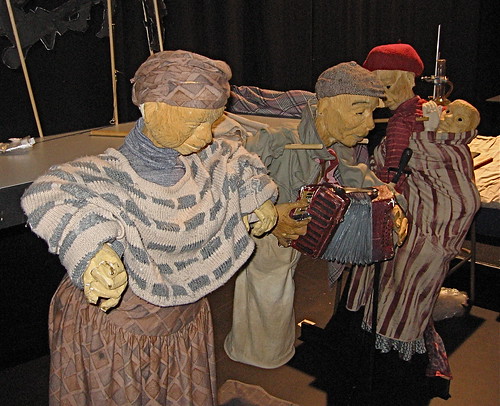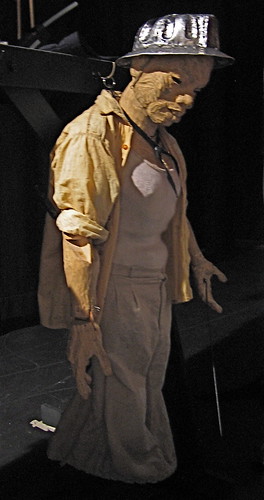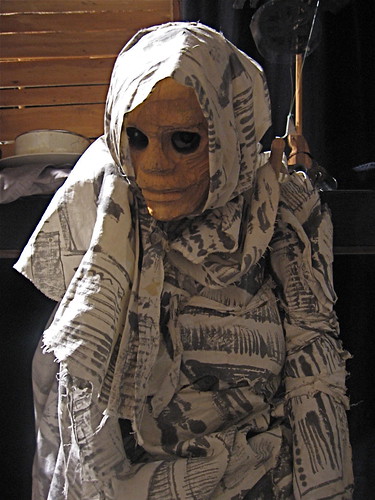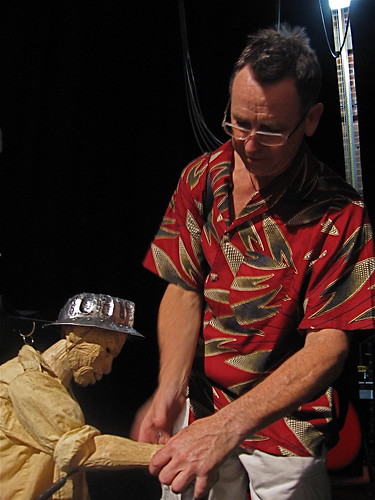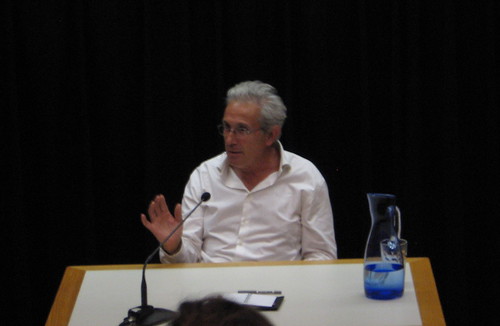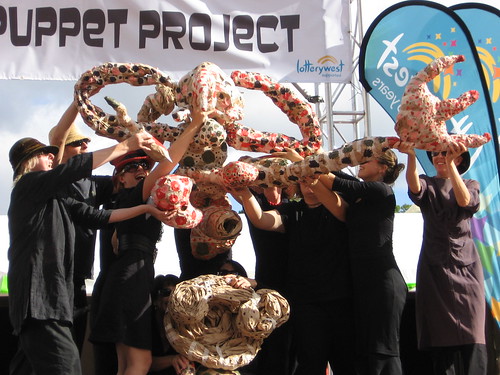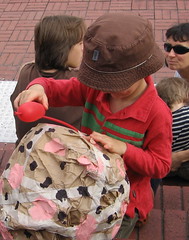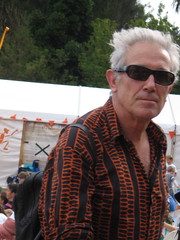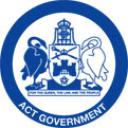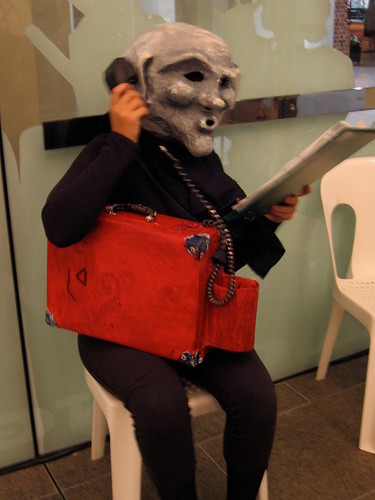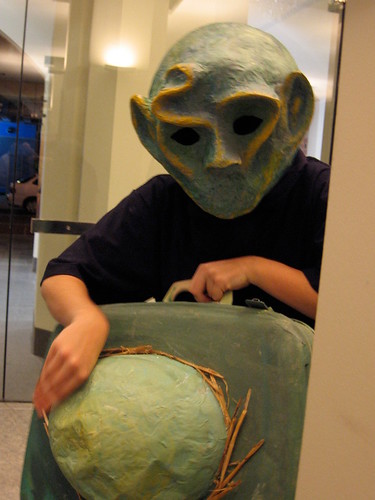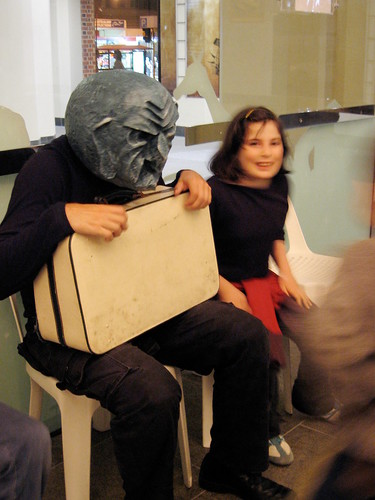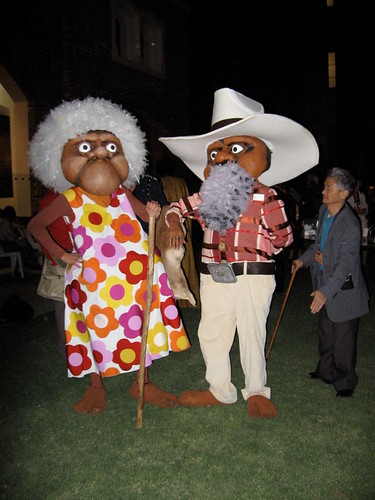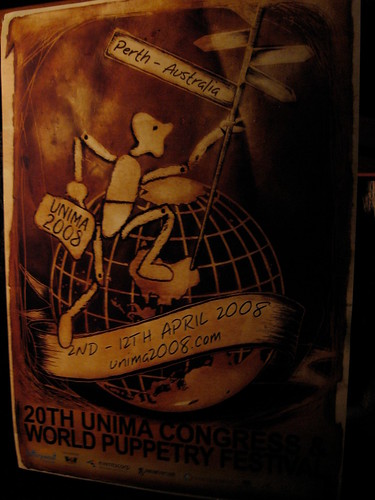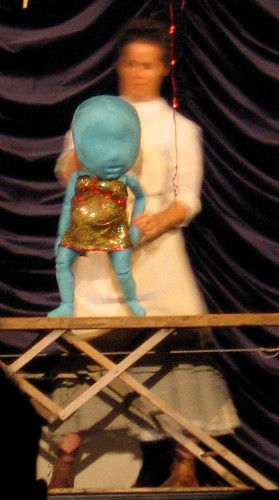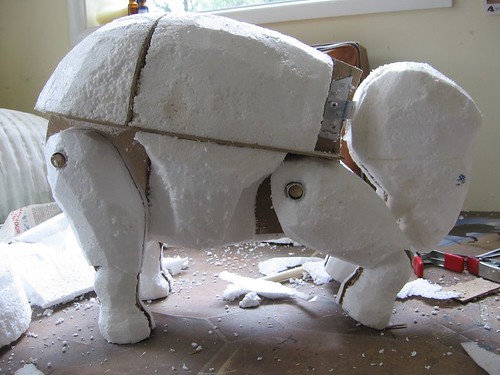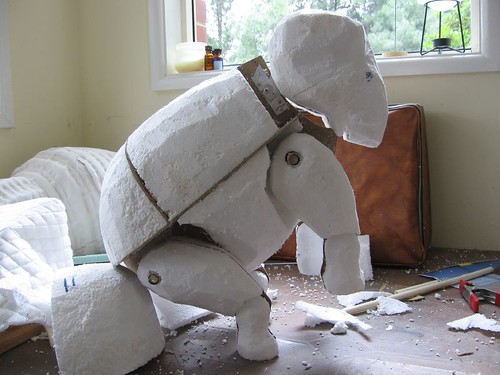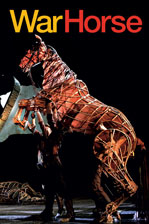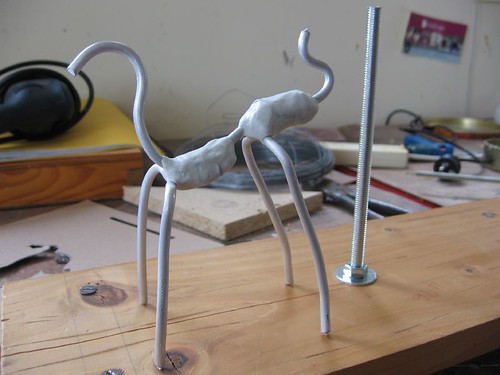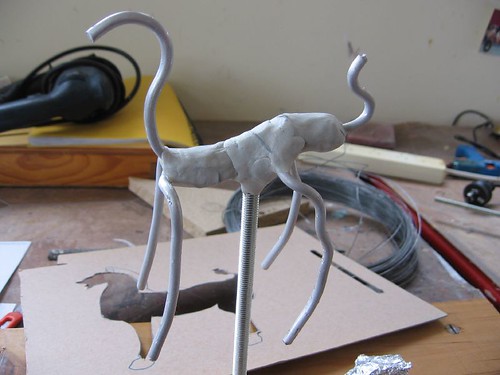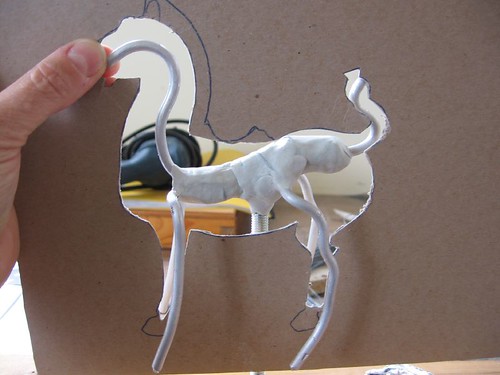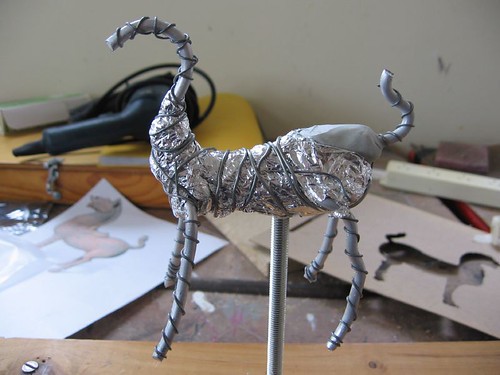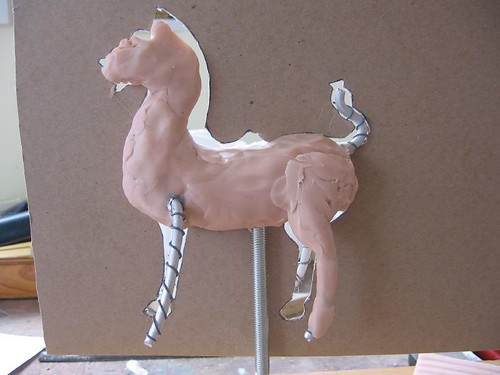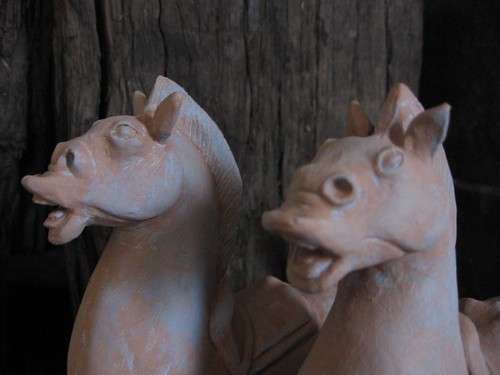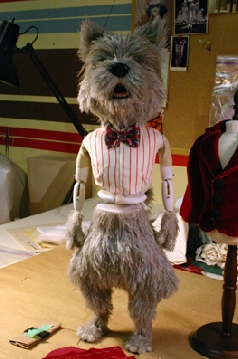On the last day of Unima 2008 Gary introduced me to his friends Adrian Kohler and Basil Jones, who co-founded and continue to run Handspring Puppet Company, and I was lucky enough to go backstage to see the puppets from Woyzeck on the Highveld. Thank you all!
The play itself had been a festival highlight for me. First staged 16 years ago, it tells the story of Woyzeck, a man of sensibility and principle, who is brought down by jealousy; but his struggle is informed in every way by the hardships of the migrant labour system under apartheid in the South Africa of the 1950’s.
Two aspects of the show intrigued me in particular.
One was the power of director William Kentridge’s back-projected animations which formed part of the backdrop to the set. They provided not only physical settings to the action and shadow puppets, but at times gave excruciating visual metaphors for what characters were thinking and feeling. For instance, in one scene, Woyzeck is worrying about setting his master’s table. He is doing fine in reality, but in contrast, as he gets increasingly anxious about doing it perfectly, the animation shows great smudges and spills amassing into a chaos that ends in, among other things, a plane crashing and burning.
The other was, of course, the puppets. They are bunraku-style puppets, with beautifully expressive carved (and hollowed out) wooden heads and hands. Adrian is the master puppet maker and designer. He explained how after touring Woyzeck extensively for some years, the company saw selling the puppets as the only way to move on to doing new work. Their latest production, Warhorse, would have been too big to tour, and fortunately, to their surprise, the Munich City Museum was happy to lend the puppets back for the gig at Unima 2008.
Margaret (?), Andries, with the accordion, and Maria with her baby:
The Miner:
The mysterious newspaper death-like character:
Adrian Kohler with the Miner, explaining how the implements in his hand can be changed:
The rhino, showing the rods and mechs on the operator’s side. There is a universal joint in it’s sternum. The red bulb is it’s bladder! (not to be confused with the 2 red chairs in the background).
Here is a video of the rhino in action. You can hear Gary and Adrian chatting.
I loved the rhino most, because it has so much character, and moves in such a life-like way, while being impressionistic in style. I’m very interested in this. Kohler has developed the style much further, too, since building the rhino, as you can see if you look at the horses in Warhorse. Warhorse is the first production where Handspring has moved away from performing their own work, and Adrian commented there were advantages in being solely a maker at times, rather than being a maker/puppeteer.
Incidentally, Handspring is hoping to bring out a DVD of Woyzeck, including the animations, and there is to be a new season of Warhorse in London later in 2008. There’s just a chance I might around to catch it!
Articles I enjoyed reading about Handspring:

